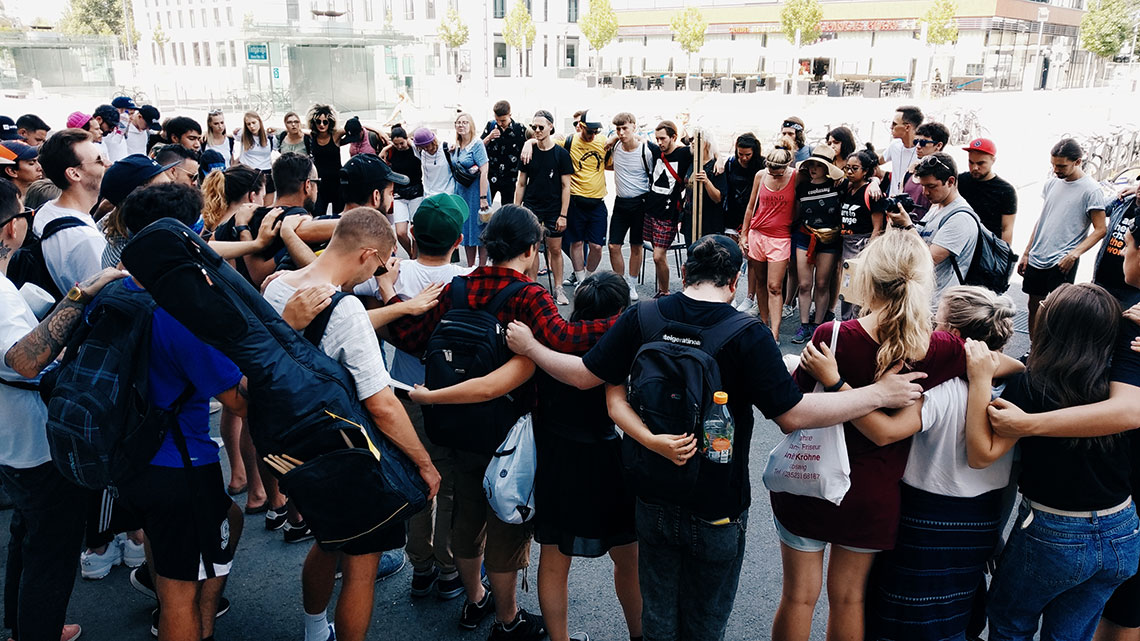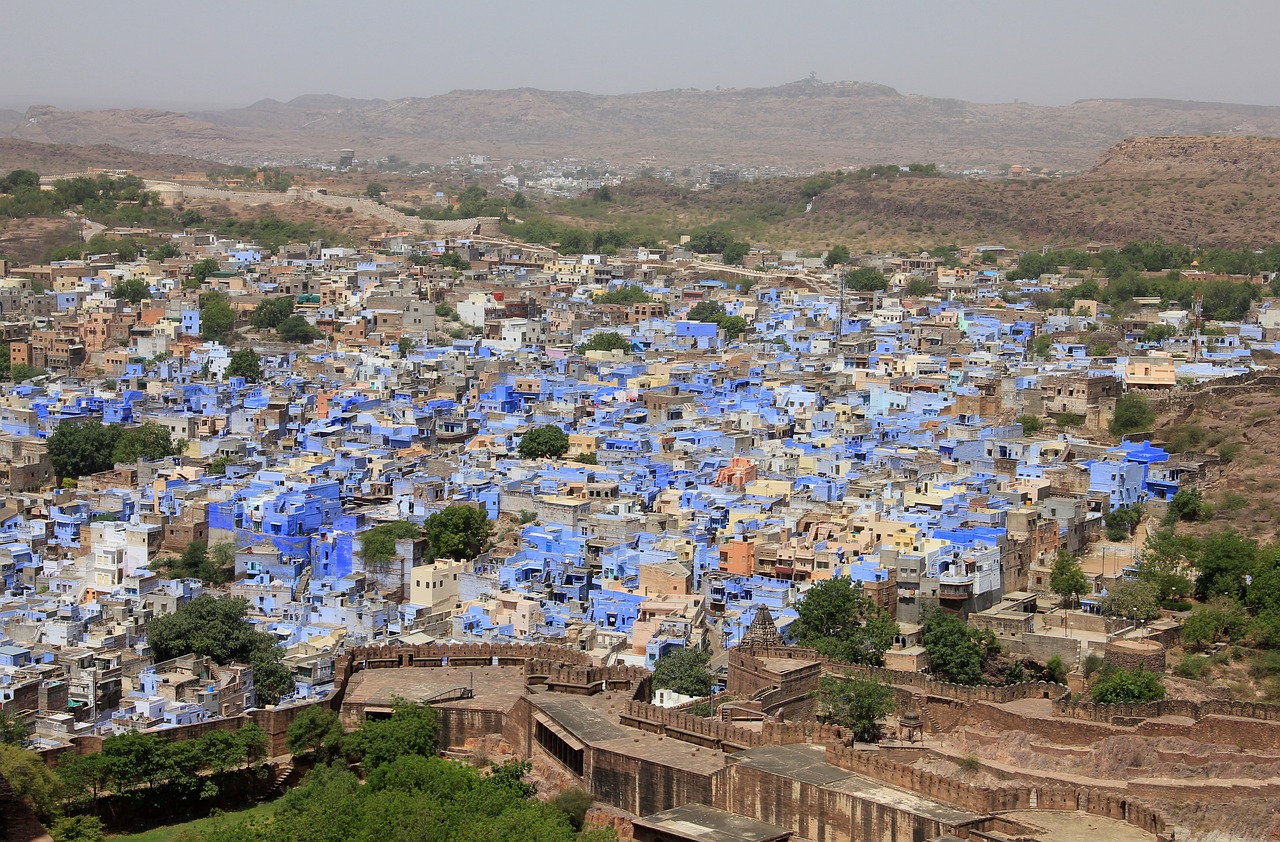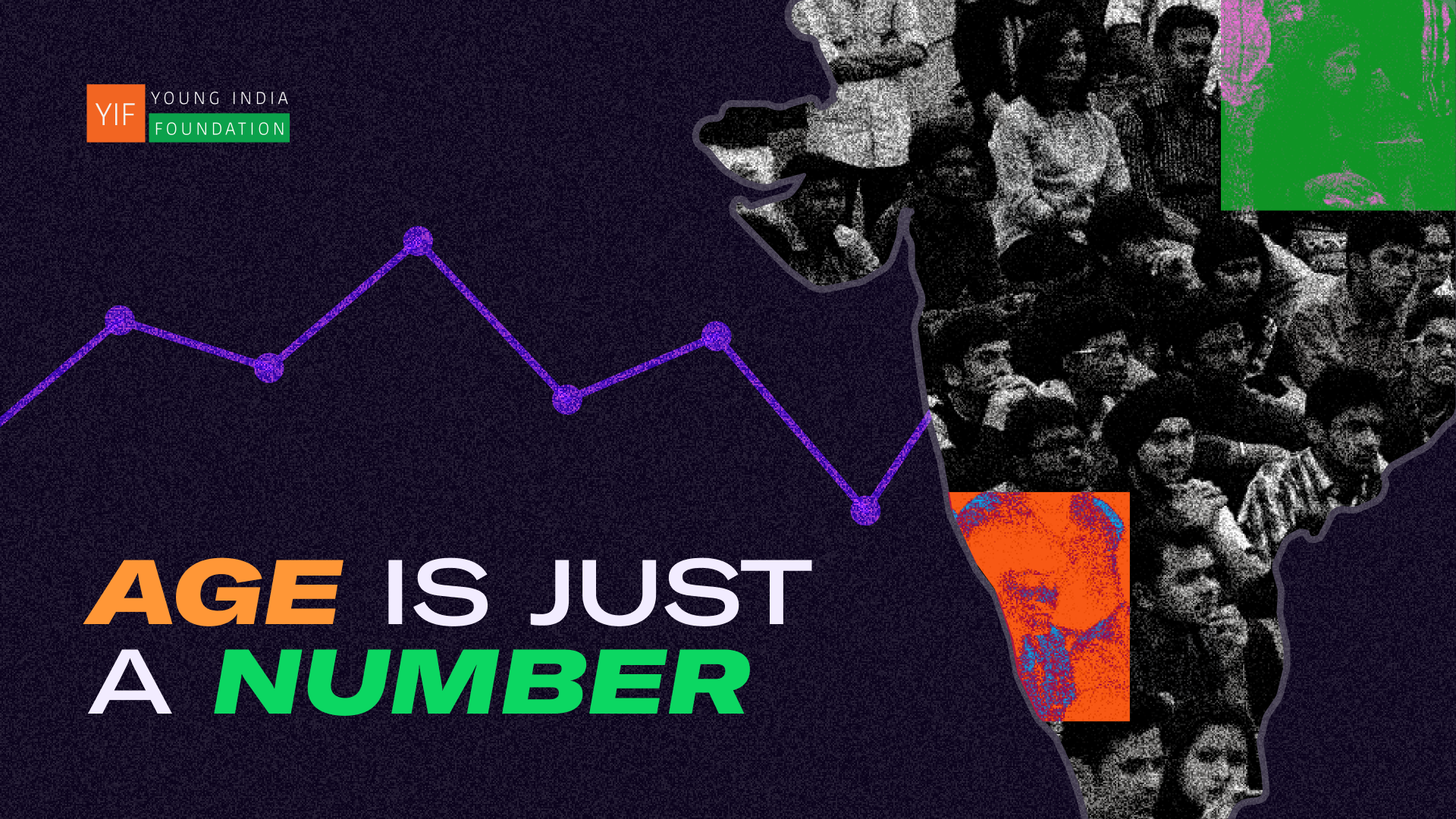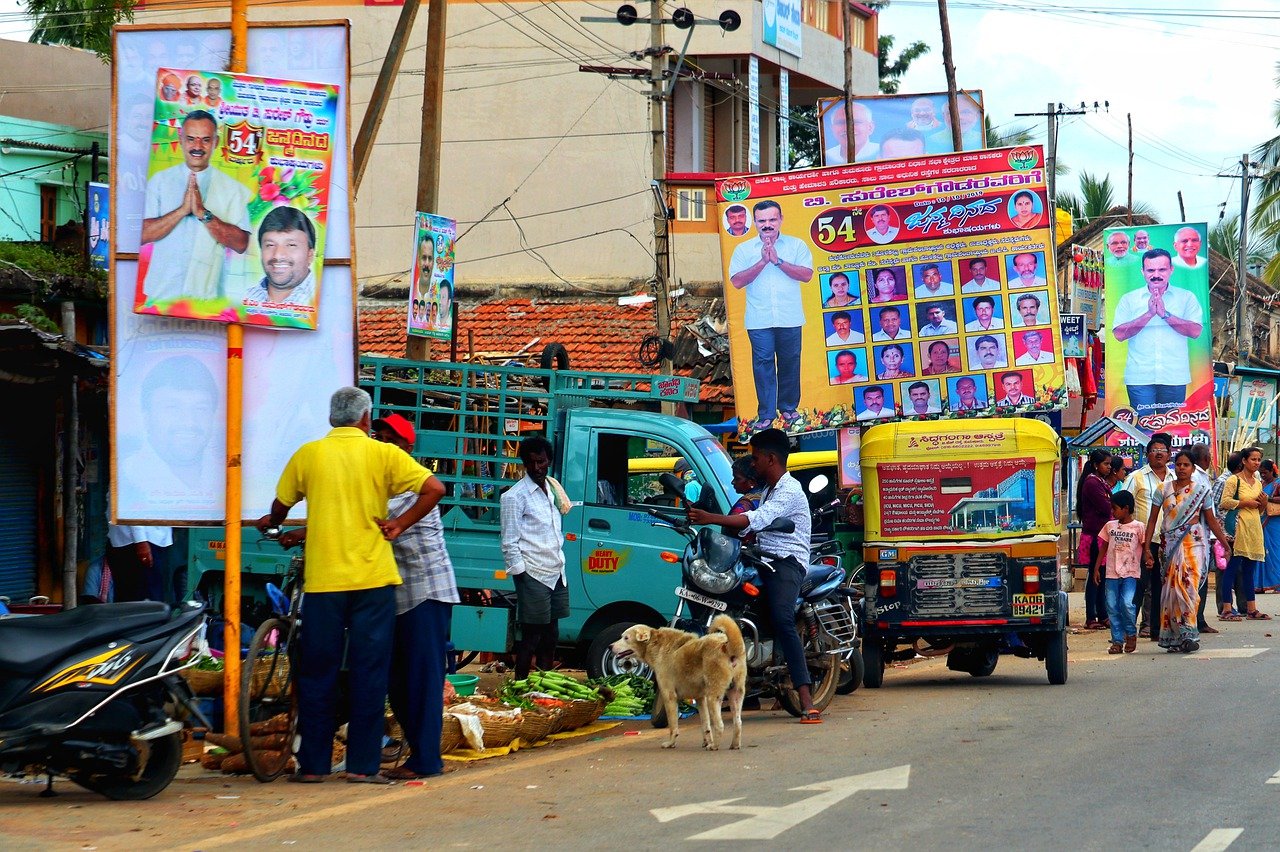Various scholars, governments and international organisations have defined ‘youth’ using different metrics. Additionally, different fields that study youth may have varying definitions and perspectives on how youth should be studied and understood. Debates within these fields can be useful in providing insights and understanding regarding the various positions and definitions of youth. This report looks at various definitions of youth and how they have been reached.
“Youth is best understood as a period of transition from the dependence of childhood to adulthood’s independence. That’s why, as a category, youth is more fluid than other fixed age-groups. Yet, age is the easiest way to define this group, particularly in relation to education and employment, because ‘youth’ is often referred to a person between the ages of leaving compulsory education, and finding their first job.”
United Nations definition of youth in a 2013 report.
Introduction
Age, parties (not the political kind), (un)employment, college are some of the things that come to mind when thinking about youth. But what is youth? How is our perception of this social category or life-stage shaped? How do people characterise this loosely defined category? Does it change across cultures or remain uniform? These are some questions scholars of youth studies have been asking, especially in light of the diverse ways in which youth has been defined by various governments, organisations as well as within academic debates. The Oxford Learner’s dictionary defines youth as “the time of life when a person is young, especially the time before a child becomes an adult”. In other words, “the period between childhood and adult age”.
Given this definition, and the inherent connotations of the word itself, age is inseparable from youth.
Age is a temporary state in someone's life, unlike other group features like gender identity or religious affiliation, which tend to be stable and based on identifiable markers. This makes belonging to the group of young people different from belonging to other politically marginalised groups. While ageing is inevitable, being young is not a permanent feature, and it may raise the question of whether we should pay attention to a group with whom a majority of individuals will only have a temporary identification. However, adolescents and young adults up to the age of 30 or 35 become aware of what happens around them and develop their political values, ambitions, and habits during these formative years. Each generation develops its own defining features that reflect their shared views on politics and society. Therefore, despite being a temporary state, it is crucial to pay attention to the youth as they shape the future of society. It is afterall, a stage everyone passes through and a distinct period on its own.
Various scholars, governments and international organisations have defined ‘youth’ using different metrics. Additionally, different fields that study youth may have varying definitions and perspectives on how youth should be studied and understood. Debates within these fields can be useful in providing insights and understanding regarding the various positions and definitions of youth.This report looks at various definitions of youth and how they have been reached.
This report has three major sections. The first sums up scholarly literature and various perspectives that have emerged with respect to definitions and categorisations of youth; what parameters are used and how, with a critical lens. The report moves on to how ‘youth’ has been constructed by the UN and other related international organisations. Finally, we look at youth in India and how it has been defined in the Indian context. This section includes anthropological perspectives and difficulties arising out of the act of definition.

Commonwealth Youth Programe, Year of Youth 2023.
Contextualising the conditions of youth in the 21st century
The pressure on young people today has intensified. In the past, age was used as a way to manage and control the population during the era of industrialization. Today, the technologies of biopower have become more intense, sophisticated, and pervasive than ever before. Students across the world are now tested with greater intensity and are compared not only to their peers in school but also to those in other schools, states, and countries. Take for instance the highly competitive environment in engineering colleges across the country, where millions of young people compete to qualify standardised tests and make it to the most reputed institutions. On top of that are existing fissures of caste and class that create varying access to education and employment. There has been an increase in surveillance over the experience of youth, including police in schools, closed-circuit cameras, and websites charting developmental milestones. However, there has also been an explosion of multiple expressions of different selves, such as through blogging, social networks, and online role-playing games, which challenge the idea of "normal" development.
Instead of denying coevalness (Woo, 2012), we need to find new ways of understanding young people and value different ways of growing.
We should seek to understand and discuss issues that young people face in all spheres - the home, in higher education, in navigating love and sexuality and so on, as well as ask questions about the effectiveness of age-graded schools and young adults' participation in decision-making processes. We cannot claim to be open to the future if we continue to insist on a one-to-one link between qualifications and ongoing career attainment, especially in the context of increasingly uncertain career prospects (Dwyer & Wyn, 2004). As precarious as it is to be a young person in increasingly unstable economies, with climate change looming over the heads of younger generations, historically, young people have asserted themselves using a variety of ways - movements, associations and rights based organisations and so on.
Defining ‘Youth’
The most common way of defining youth has been using age. Age is a commonly used metric for assessing a wide range of activities, such as when individuals should start walking or talking, be granted driving privileges, consume alcohol, vote, get married, retire, or watch certain movies. While we may recognize that people develop at different rates and that age categories are primarily a tool for organisational purposes, we tend to consider age-based assessments as objective, innate, and even ethical. For instance, the UN defines youth as those persons between the ages of 15 and 24 years (Youth | United Nations, n.d.). In the Western world, the term "youth" is commonly associated with a biological reality. Children and adolescents are primarily defined by their age and physical development, which is seen as an essential aspect of their nature (Seaton, 2012).
The concept of age is not fixed, but rather fluid and can have both objective and subjective meanings.
There is no clear-cut threshold that separates young people from those who are not young anymore, and being of a certain age may hold different significance depending on the setting and time period. For example, in countries with low life expectancies, 30 years old may be considered old, while in countries with higher life expectancies, it may still be considered young. Additionally, individuals may be in different life stages at the same age in different parts of the world. Unlike other group features, such as gender identity or religious affiliation, which tend to be stable and based on identifiable markers, being young is a temporary state that everyone will inevitably outgrow (Stockemer & Sundstrom, 2022).
Stockemer and Sundstorm (2022) have also used age as the basis for defining youth in their research. They argue that it is not useful to solely focus on self-identification as a young adult because someone of any age could potentially identify as young. Instead, when referring to "youth" as a group, they feel it is important to use an objective age category as a measure. This is because research on young adults in politics typically uses this approach and it is pragmatic. Additionally, using an age-based approach allows for a clear definition of youth, which is necessary for empirical analysis. The lower age limit for defining youth is generally considered to be 18 years old, as this is the age of majority in most countries, where the law recognizes adulthood and grants the right to vote and stand for office. The upper age limit for youth is more variable, ranging from 35 to 45 years old. To capture this range, their research uses two upper age limits: 35 and 40 years old. This is important when studying candidates, legislators, and cabinet members, as it reflects the current definitions of youth in politics (Stockemer & Sundstrom, 2022).
However, an “objective” age criteria assumes that everyone develops the same way (Harlan, 2022). While age may seem to be a solid basis for understanding youth it has been problematised in youth studies research. Scholars assert that youth is not simply a biological or chronological category, but a social construct that is shaped by cultural, economic, and political factors. Youth studies research often explores how social and cultural contexts influence the experiences, identities, and behaviours of young people, and how these experiences vary across different social groups and historical periods. Moreover, youth studies scholars often critique the assumption that youth is a homogeneous group with shared challenges, interests, and concerns, as this overlooks the diversity and complexity of young people's lives. Instead, youth studies research tends to focus on the ways in which young people navigate and negotiate social structures, cultural norms, and power relations in their everyday lives.To link chronological age and biological development ignores the impact of culture on knowledge and individuals' capacities (Woo, 2012).
Scholars of youth studies have argued for a dialectic between nature and culture as the basis for a conceptualisation of youth (Seaton, 2012). The concept of youth, Seaton argues, should be viewed as a dynamic interaction between the body and its surroundings, with each shaping and influencing the other. This relationship highlights the interconnectedness of nature and culture, which have been historically linked not only in terms of language but as interdependent factors that govern all living processes (Seaton, 2012).

Mulberry Street, New York City, c. 1900, Library of Congress
At this juncture, it is useful to look at how age developed significance. According to Joseph Kett's analysis of age-related language, in preindustrial America, age-based terms like "childhood" and "youth" were less specific and precise. Factors such as physical size and level of independence from the family were used to identify young people rather than their specific age. As a result, social and civic spaces were less segregated by age, and teenagers frequently participated in political meetings (Kett, 1977).
However, with the rise of industrialization and the emphasis on efficiency and productivity, there emerged a need for precise age-related categories for organising schools, establishing laws, and defining "normal" development towards adulthood. Age-based distinctions became socially necessary for separating and organising different age groups, reflecting the linear, modern temporality of the industrial era (Greenhouse, 1996). Woo (2012) argues that to comprehend young people better, it may be beneficial to adopt a viewpoint that acknowledges coevalness instead of disregarding it, which has been the norm for an extended period. It would be advantageous to conduct research and assessment based on our lived experiences, which involves recognizing that youths and adults share the same world and have different approaches to growth, rather than following the linear model that age implies.
The other way of looking at youth has been the ‘life-stage’ perspective. The life stage perspective considers youth as an extended phase between childhood and adulthood (Christiansen et al., 2006), characterised by a transition from dependence to independence and maturity. This phase is seen as a crucial period during which young people become contributing members of society. Therefore, this perspective is also known as the "youth transitions" perspective (Bersaglio et al., 2015). Both the World Bank and the International Labour Organization (ILO) define youth in accordance with this perspective, which is described in the next section. However, looking at this perspective critically, “there is a need to develop ways of talking about young people that do not assume youth is merely an ‘inbetween stage’ or a ‘process of becoming’, but a form of personhood requiring research in its own right” (Tyyskä & Côté, 2014).
Brown and Larson (2002) point out a trend in perceptions of youth across the world - by examining the common characteristics of youth around the world, one can identify a shared image of their transition from childhood to adulthood.
Although there are differences in specific details, the overall impression is that young people face similar challenges, have similar interests, and share similar concerns. This has led to the idea of a "global youth culture," particularly among middle-class youth who dress similarly, listen to similar music, and use similar slang. The shrinking of the world due to technology such as the Internet has also contributed to this sense of commonality.

Global Youth Culture, Steiger Missions School
As ideologies fade and economic systems merge, there is a growing sense of shared experience among young people globally. The concept of "youth culture" sees young people as a distinct group with their own perspectives and experiences, often expressed through subcultures and styles. This perspective focuses on how young people interpret and interact with the world around them, rather than just their familial or societal roles. While this approach is commonly used in Western contexts, it may not be as relevant in other parts of the world, where it is criticised for ignoring the broader cultural and economic contexts in which young people exist, and for either overemphasising or underestimating their agency (Jeffrey, 2012; Feixa & Nilan, 2006; Christiansen et al., 2006;).
Using social constructivism as a framework, scholars have conceptualised the category of youth as a social construct that changes over time and in different contexts, influenced by broader political and economic changes (Ansell, 2004; Jeffrey, 2011). In the context of global development, youth has been redefined to align with the demands of capitalist economies and to spread capitalist social relations and political stability. Therefore, it is not possible to separate the meaning of youth from the geographical, historical, and political-economic contexts in which young people exist. Acknowledging that dominant political-economic actors shape the understanding of youth, it is important to recognize that they promote and produce a future based on their ideological vision for society. This involves using youth wings in political parties, education systems, social media, and technology to promote consensus for a particular vision of society. Therefore, any increased focus on youth is closely linked to broader political-economic projects and not solely the result of increasing youth populations in certain geographic locations.
To sum up, scholars of youth studies have underlined how age criterias were never a given, but its importance and structure developed in a certain historical context, responding to changes taking place in society.
They also point out that age is an arbitrary grouping that, in isolation, fails to take into account how culture, politics and one’s surroundings impact an individual’s personality and behaviour.
Using ‘social construction’ as a frame with which one can look at youth as an identity or category is useful so as not to prevent limiting our idea of what constitutes youth-hood as a distinct period. However, in the context of politics and understanding youth rights, one has to adopt the lens used by governments across the world, as well as international organisations as they use lower and upper age limits to create ‘youth’ as a separate category for whom specific policy interventions need to be made.
Youth and the UN
“The post-2015 development agenda is about building a better future. The future means youth. There is much evidence showing that inequality limits opportunities for young people. These gaps often prevent them from getting out of poverty and lead instead to conflict, violence and instability. We need the participation, perspectives and passion of young people. Today’s youth are at the leading edge of innovative ways to amplify voices and share ideas.”
UN Secretary-General, 2014
The UN Secretary-General, Ban Ki-moon, stated at a UN General Assembly event in March 2014 that the UN was prioritising youth as a critical component of the post-2015 global development plan. This statement emphasises the significance of young people's political and economic contributions in tackling poverty, as well as their role as agents of change in the social and rhetorical sphere (Jeffrey, 2011). In current discussions about the post-2015 development agenda, there has been a notable global shift toward prioritising youth as a targeted group. The previous Millennium Development Goals (MDGs) did not specifically address the needs of youth, but in response to calls for greater youth involvement, the UN has taken steps to incorporate their perspectives. From October 2012 to January 2013, the UN and its partner organisations conducted extensive consultations with young people to gather input on their priorities, needs, and proposed solutions for development issues in the post-2015 context (Bersaglio et al., 2015).

Youth 2030: The United Nations Youth Strategy, un.org
According to the UN, “There is no universally agreed international definition of the youth age group. For statistical purposes, however, the United Nations—without prejudice to any other definitions made by Member States—defines ‘youth’ as those persons between the ages of 15 and 24 years." This definition, which arose in the context of preparations for the International Youth Year (1985) (see A/36/215), was endorsed by the General Assembly in its resolution 36/28 of 1981. All UN statistics on youth are based on this definition, as is reflected in the annual yearbooks of statistics published by the UN system on demography, education, employment and health.” (Youth | United Nations, n.d.) The UN provides a "universal" definition of youth, which primarily relates to education and employment. UNESCO states that youth typically refers to individuals who are no longer required to attend school but have not yet found their first job. The World Bank defines youth as individuals between 15 and 24 years old, marking the transition from dependence to independence (Bersaglio et al., 2015). The International Labour Organisation (ILO) also defines youth as the 15-to-24 age group, but notes that the process of transitioning to adulthood and achieving financial stability can be lengthy, especially in poorer societies (ILO, 2006).
While all these organisations have selected a specific age cohort, they have provided a range of parameters [education, employment, (in)dependence, and so on] which make this cohort distinctive. These definitions hinge on looking at youth as a transitory life stage with certain characteristics, with the future of adulthood being the goal in sight. For organisations like the UN, youth is a ‘stepping stone’ to a more certain and safeguarded adulthood, and its policy interventions seek to provide young people with economic, political and cultural opportunity and support to reach that safeguarded adulthood. This is captured in the opening sentence of the UN World Youth Report - “The transition from youth to adulthood marks a key period characterised by greater economic independence, political involvement, and participation in community life. However, the socioeconomic and political environment in which young people live can have a serious impact on their ability to engage.” (World Youth Report, 2015)
‘Youth’ in India
Over the past few decades, traditional beliefs about families, careers, and where people live have been changing slowly in India. This has made being young more important than it was 30 years ago. Additionally, in 1989, the minimum voting age in India was lowered from 21 to 18 years old, and there were also changes made to allow young people to participate in formal politics. As a result, young people now have more opportunities to become politically active.
Some experts believe that the idea of "youth" as a distinct social category is not relevant in India because it is believed that people transition directly from childhood to adulthood (Verma and Saraswathi, 2002). Others have relied on simplified views of age-based roles to make assumptions about the behaviour of young people (Dyson, 2008). Jeffrey (2011) makes an attempt to understand Indian youth in its unique social, political and cultural contexts. This anthropological understanding is useful before delving into definitions that the state has used.

Deepak (Dev) Adhikari is a 40-year old Lok Sabha member, representing Ghatal, West Bengal. Source.
In India's political arena, it's common for individuals in their thirties or forties to refer to themselves as youth (Jeffrey, 2009). Ethnographic research has shown that determining when someone transitions from being a child to a youth is difficult, if not impossible, and their youth status may also be temporary, as they may return to education or living with their parents.
Due to the complexity of young people's relationship with biological maturity, many researchers believe that age-based social categories are arbitrary and difficult to define (Johnson-Hanks, 2002). Making a distinction between youth as a category of analysis and as a “locally deployed” concept that is fluid and variable depending on specific location, Jeffrey (2011) defines youth on the basis of ethnographic research in Uttar Pradesh - “people in their teens and twenties” (Jeffrey, 2011). He makes a case for using context - geographical, political, social and cultural to identify how youth is perceived in an area and the conditions informing that perspective.
As per the 2014 National Youth Policy drafted by the Ministry of Youth Affairs and Sports in India, youth is defined as all those between the ages 15 and 29. While the lower limit is the same as the UN, the upper limit includes those between 25 and 29 as well. This definition was first introduced in the National Youth Policy in 1988 and has been subsequently revised in 2003 and 2014. The logic behind this definition is that it aims to capture a specific age group that is transitioning from childhood to adulthood and is expected to play a crucial role in the country's social, economic, and political development. The state needs an age-based upper and lower limit to define youth to be able to create targeted policy interventions. Although this age based definition has been critically scrutinised as we have seen, it becomes challenging for governments and organisations to work outside an age/biology based framework.
The definition was arrived at after a series of consultations and discussions with various stakeholders. The first National Youth Policy was introduced in 1988, followed by revisions in 2003 and 2014. The policy formulation process involved consultations with various government departments, civil society organisations, academic institutions, and youth groups. The discussions and deliberations helped to shape the definition of youth and the subsequent policy initiatives. One of the key parameters that informed the definition was biological maturity. The age range of 15 to 29 years is considered the period of transition from childhood to adulthood, marked by physical, emotional, and intellectual changes. The National Youth Policy recognizes the importance of this transition period and emphasises the need to support young people during this phase to enable them to achieve their full potential. Another parameter that informed the definition was social and economic considerations. The National Youth Policy acknowledges the challenges faced by young people, including unemployment, underemployment, and poverty. The policy has stressed on the need to provide youth with education, skills training, and employment opportunities to enable them to become self-reliant and contribute to the country's development. Political considerations also played a crucial role in shaping the definition of youth in India. The country has a vast population of young people, and they constitute a significant proportion of the electorate. The National Youth Policy recognizes the role of young people in shaping the country's political landscape and emphasises the need to engage them in the democratic process (National Youth Policy 2014).
The definition of youth in India is significant in several ways. It provides a comprehensive framework for addressing the specific needs and challenges faced by young people. It also serves as a basis for policy development and program implementation aimed at supporting youth in achieving their full potential. The definition is also critical in facilitating data collection and analysis. India has a vast and diverse population, and having a specific age range for youth enables policymakers to collect and analyse data on this population segment. This data can help inform policy decisions and program development aimed at addressing the needs of young people.
However, while the definition of youth in India is comprehensive and considers a range of parameters, it also has some limitations. For instance, the age range of 15 to 29 years is broad, and there may be significant differences in the needs and challenges faced by young people at different stages within this range. Additionally, the definition does not take into account other factors that may impact young people, such as gender, caste, and religion. At the same time, given the challenges faced by those even in the 25-29 age bracket, some might argue that including them in the category of youth can be beneficial as they require safeguards and policy support.
Conclusion
It is important to keep in mind the drawbacks of age-based definitions of youth that scholars have repeatedly asserted. We limit our understanding of young people’s lived experiences if they are constantly viewed as a transitioning group or as becoming something else, i.e. adults. The definitions used by governments are based on a convenient and practical framework but it is necessary to look beyond so as to reach a definition that takes into account various factors that shape young people’s lives in diverse cultural contexts. To truly reckon with the challenges India and the world’s youth are taking on, definitions are important. However, the process one uses to reach that definition is also crucial in deciding what kind of challenges we want to address and who we want to include.
References
Ansell, N. (2004). Children, Youth and Development. Taylor & Francis.
Bersaglio, B., Enns, C., & Kepe, T. (2015). Youth under construction: the United Nations’ representations of youth in the global conversation on the post-2015 development agenda. Canadian Journal of Development Studies, 36(1).
Christiansen, C., Vigh, H., Utas, M., & Utas, M. (2006). “Introduction: Navigating Youth, Generating Adulthood. In C. Christiansen & H. Vigh (Eds.), Navigating Youth, Generating Adulthood. Uppsala: Nordic Africa Institute.
Dwyer, P., & Wyn, J. (2004). Youth, Education and Risk: Facing the Future. Taylor & Francis.
Dyson, J. (2008). Harvesting Identities: Youth, Work and Gender in the Indian Himalayas. Annals of the Association of American Geographers, 98(1).
Feixa, C., & Nilan, P. (2006). “Introduction: Youth Hybridity and Plural Worlds. In C. Feixa & P. Nilan (Eds.), Global Youth? Hybrid Identities, Plural Worlds. Taylor & Francis.
Greenhouse, C. J. (1996). A moment’s notice: Time politics across cultures. Cornell University Press.
Harlan, M. A. (2022). Constructing Youth: Reflecting on Defining Youth and Impact on Methods. School Libraries Worldwide, 22(2).
Jeffrey, C. (2009). Fixing Futures: Educated Unemployment through a North Indian Lens. Comparative Studies in Society and History, 51(1).
Jeffrey, C. (2011). Great Expectations: Youth in Contemporary India. In I. Clark-Decès (Ed.), A Companion to the Anthropology of India. Wiley.
Jeffrey, C. (2011). Youth and Development. The European Journal of Development Research volume, 23.
Jeffrey, C. (2012). Geographies of Children and Youth II: Global Youth Agency. Progress in Human Geography, 36(2).
Johnson-Hanks, D. (2002). On the Limits of Life Stages in Ethnography: Towards a Theory of Vital Conjunctures. American Anthropologist, 104(3).
Kett, J. (1977). Rites of Passage: Adolescence in America, 1790 to the Present. Basic Books.
Larson, R. W., & Brown, B. B. (2005). The Kaleidoscope of Adolescence: Experiences of the World’s Youth at the Beginning of the 21st Century. In B. B. Brown, T. S. Saraswathi, & R. W. Larson (Eds.), The World's Youth: Adolescence in Eight Regions of the Globe. Cambridge University Press.
Ministry of Sports and Youth Affairs & Government of India. (2014). National Youth Policy 2014.
Seaton, E. (2012). Biology/Nature. In S. Talburt & N. Lesko (Eds.), Keywords in Youth Studies: Tracing Affects, Movements, Knowledges. Routledge.
Secretary-General's remarks to closing session of high-level event of the General Assembly “The contributions of women, the young and civil society to the post-2015 development agenda” | United Nations Secretary-General. (2014, March 7). the United Nations. Retrieved March 29, 2023, from https://www.un.org/sg/en/content/sg/statement/2014-03-07/secretary-generals-remarks-closing-session-high-level-event-general
Stockemer, D., & Sundstrom, A. (2022). Youth Without Representation: The Absence of Young Adults in Parliaments, Cabinets, and Candidacies. University of Michigan Press.
Tyyskä, V., & Côté, J. (2014). Towards a Non-normative Youth Studies? : A Framework for a Critical Conversation between Psychologies and Sociologies of Young People. In A. Kamp & P. Kelly (Eds.), A Critical Youth Studies for the 21st Century. Brill.
United Nations Department for Economic and Social Affairs. (2015). World Youth Report 2015. United Nations.
Verma, S., & Saraswathi, T.S. (2005). Adolescence in India: Street Urchins or Silicon Valley Millionaires? In B. B. Brown, T. S. Saraswathi, & R. W. Larson (Eds.), The World's Youth: Adolescence in Eight Regions of the Globe. Cambridge University Press.
Woo, Y. Y. (2012). Age. In S. Talburt & N. Lesko (Eds.), Keywords in Youth Studies: Tracing Affects, Movements, Knowledges. Routledge.
Youth | United Nations. (n.d.). the United Nations. Retrieved March 28, 2023, from https://www.un.org/en/global-issues/youth
.png)



 (15).png)